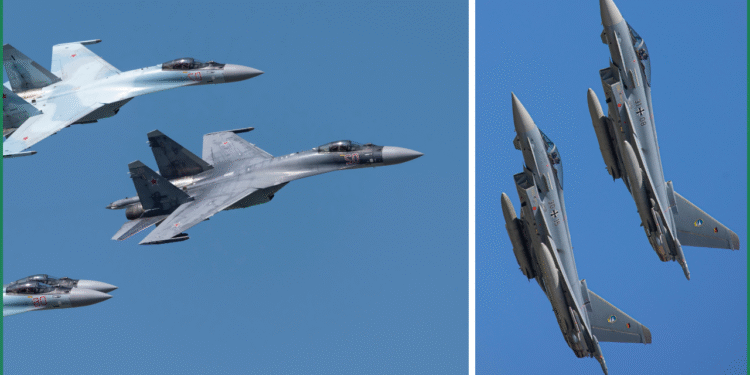On the night of May 7, 2025, the skies over the India-Pakistan border witnessed an unprecedented aerial confrontation, described by regional analysts as the most extensive and prolonged fighter jet engagement in recent history. According to multiple sources, the clash involved approximately 125 aircraft from both nations, marking a significant escalation in the long-standing tensions between the two neighbors.
The Battle Unfolds
The conflict, which lasted over an hour, saw both the Indian Air Force and Pakistan Air Force deploying a range of advanced fighter jets. Reports indicate that the engagement was characterized by long-range missile exchanges, with neither side crossing into the other’s airspace. This strategic restraint suggests a calculated effort to avoid further escalation while demonstrating military prowess.
Sources from the region claim that the battle resulted in the downing of several Indian aircraft, though exact numbers remain unverified. Pakistani officials have stated that their forces successfully neutralized multiple targets, while Indian authorities have yet to release an official statement confirming losses. The use of advanced radar systems and missile technology underscored the sophistication of modern aerial warfare displayed during the encounter.
Context of the Clash
The aerial battle comes amid heightened tensions between India and Pakistan, fueled by historical disputes and recent diplomatic frictions. Both nations have invested heavily in modernizing their air forces, with India’s fleet including Rafale jets and Pakistan countering with JF-17 Thunder aircraft. The clash highlights the volatile nature of their rivalry, which has often played out in military standoffs along their shared border.
Analysts suggest that this engagement may have been triggered by a series of cross-border incidents, though neither side has publicly detailed the immediate cause. The scale of the confrontation, however, points to a deliberate show of strength, with both nations keen to assert dominance in the region.
Global Reactions and Implications
The international community has expressed concern over the clash, with calls for de-escalation from global powers. The United Nations has urged both nations to pursue dialogue to prevent further military confrontations. Observers note that the prolonged nature of the battle, coupled with the significant number of aircraft involved, sets a new precedent in modern aviation conflicts.

















































